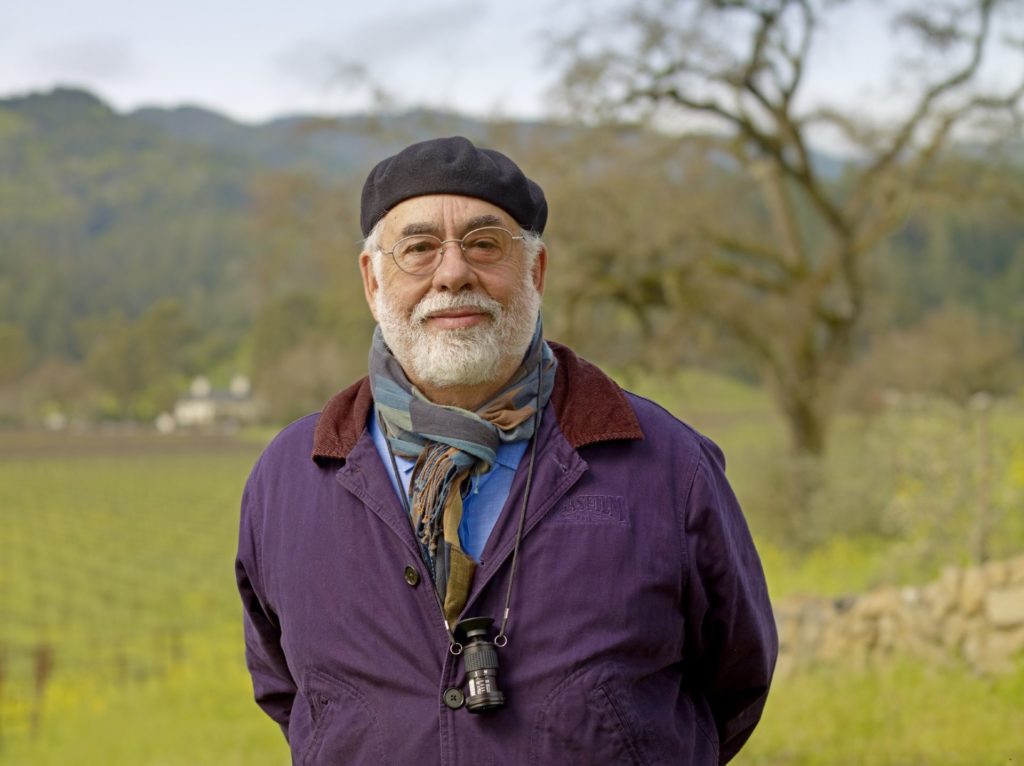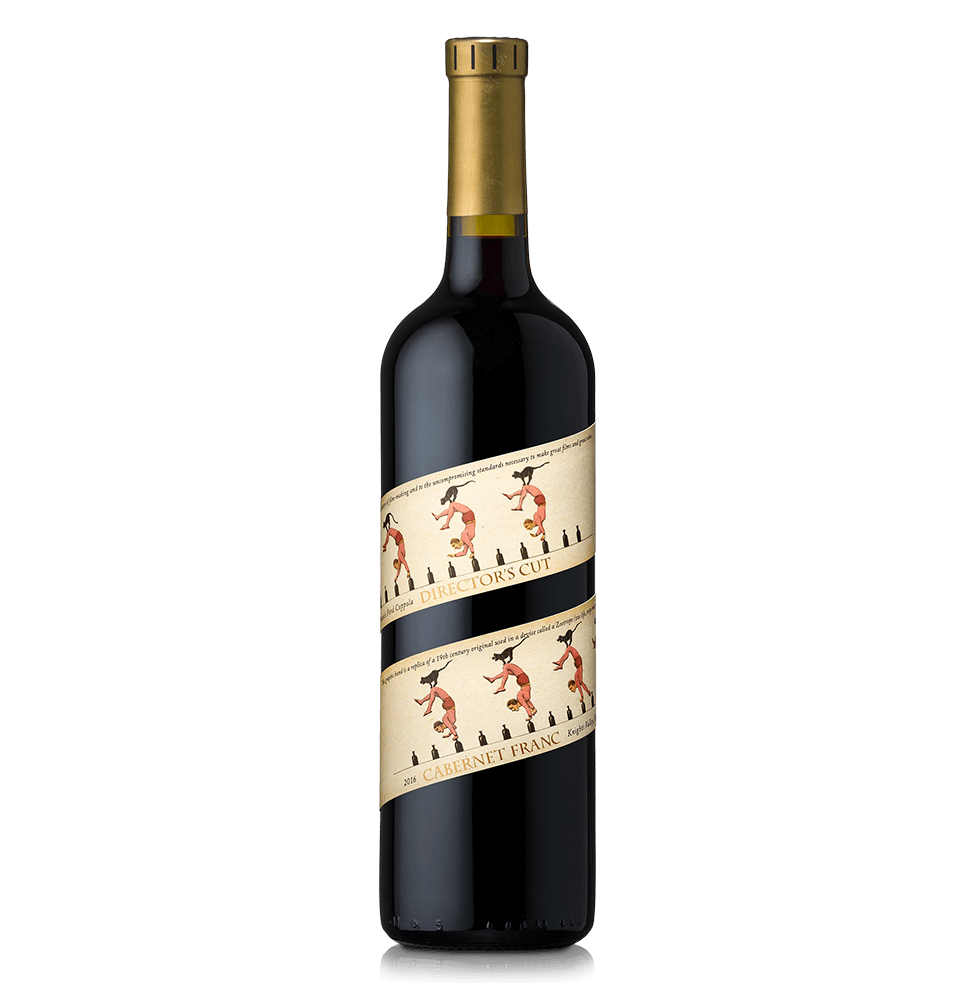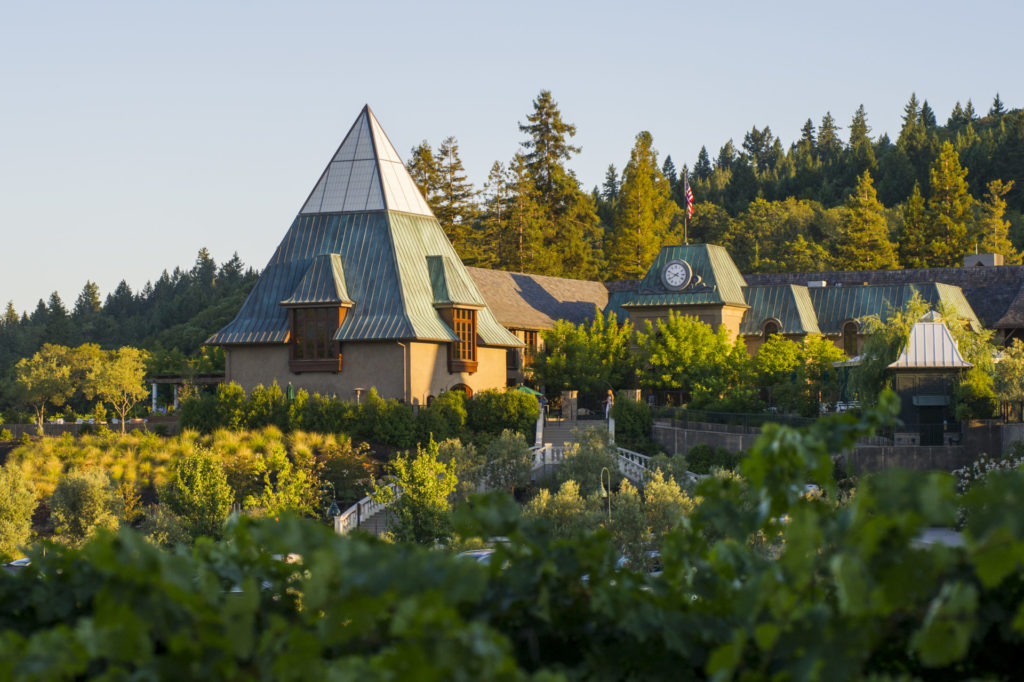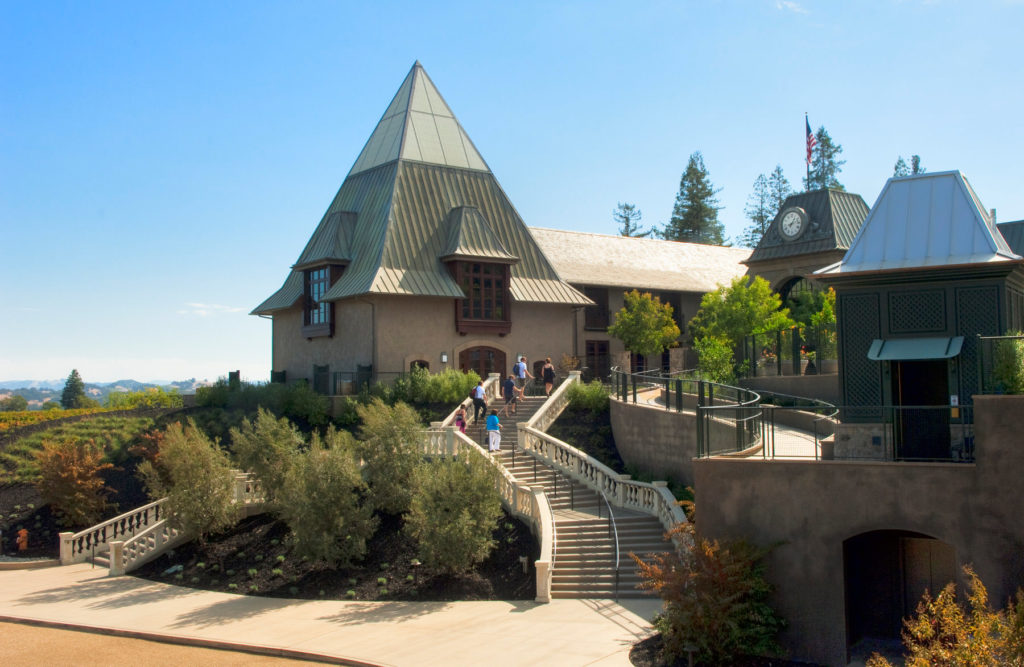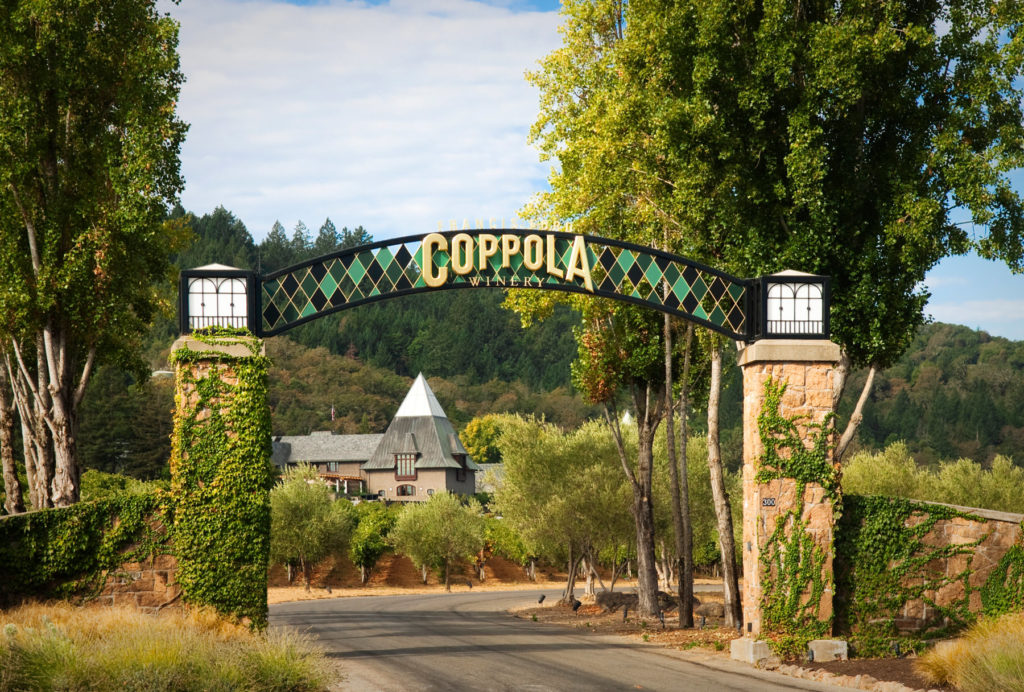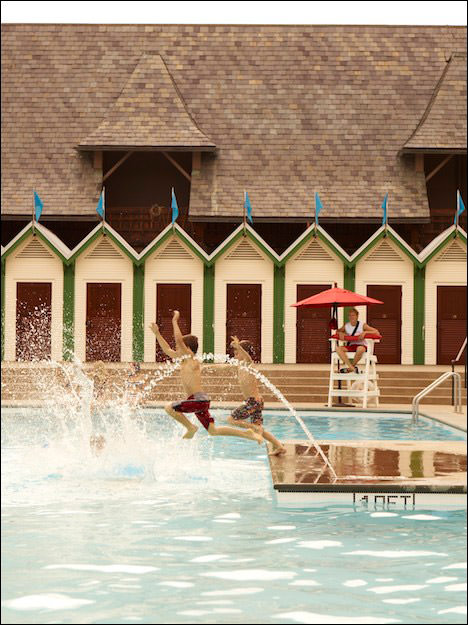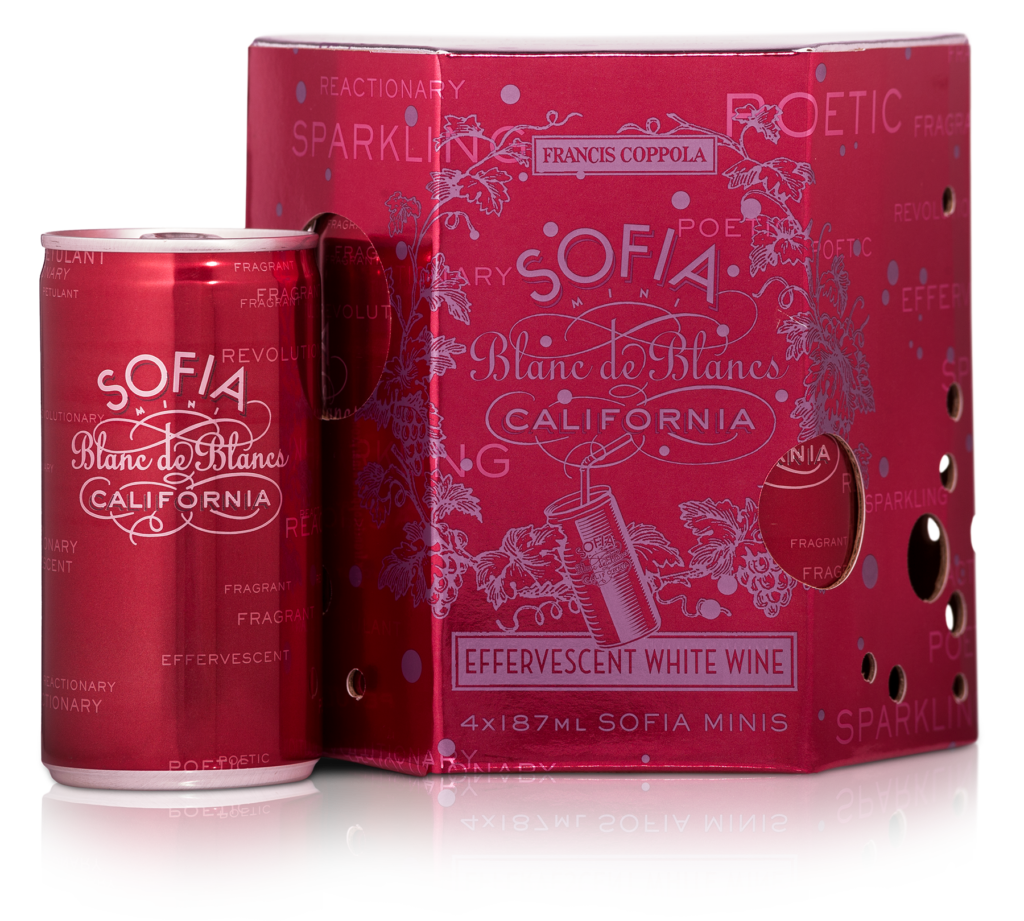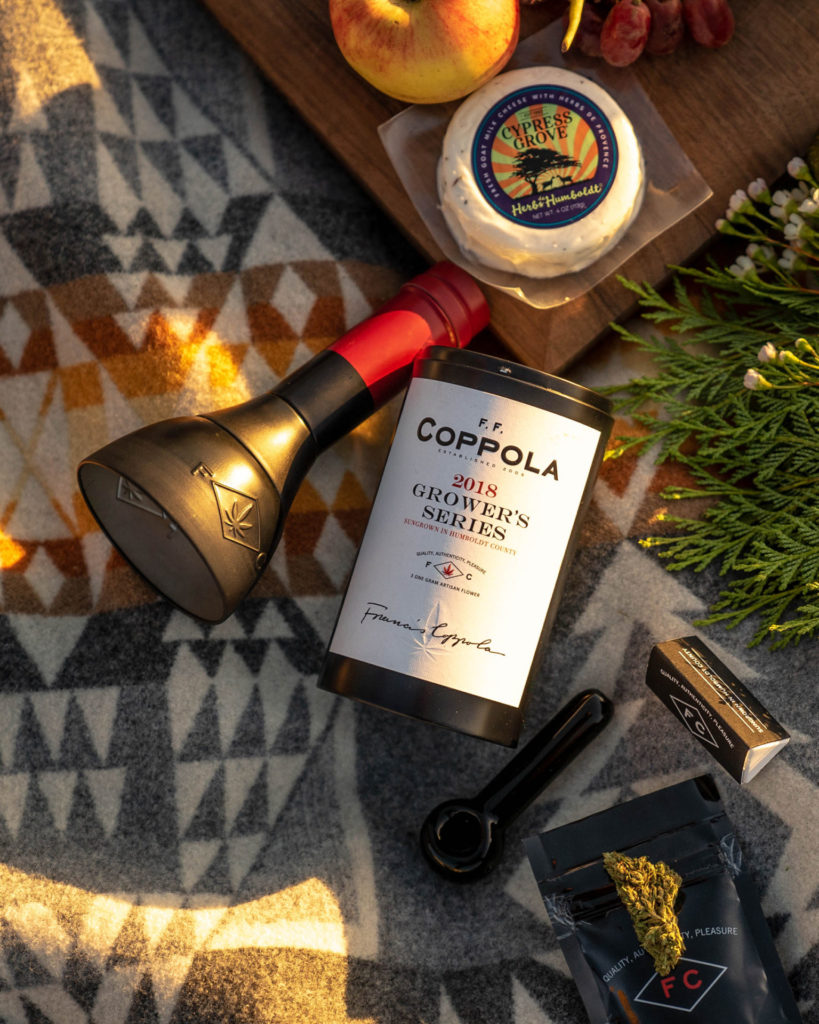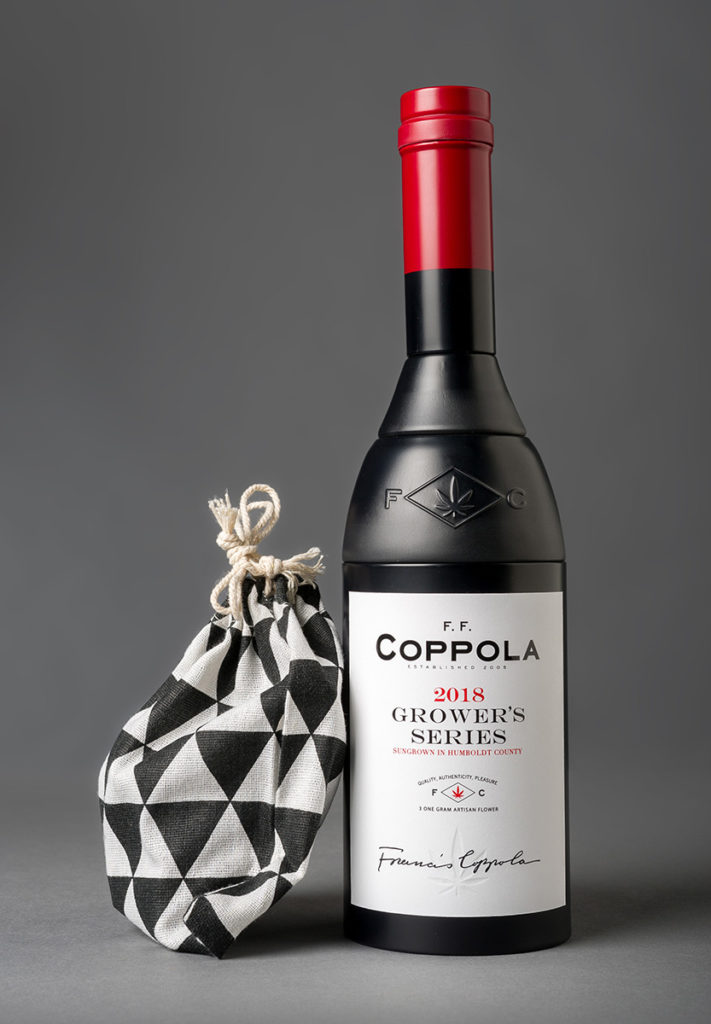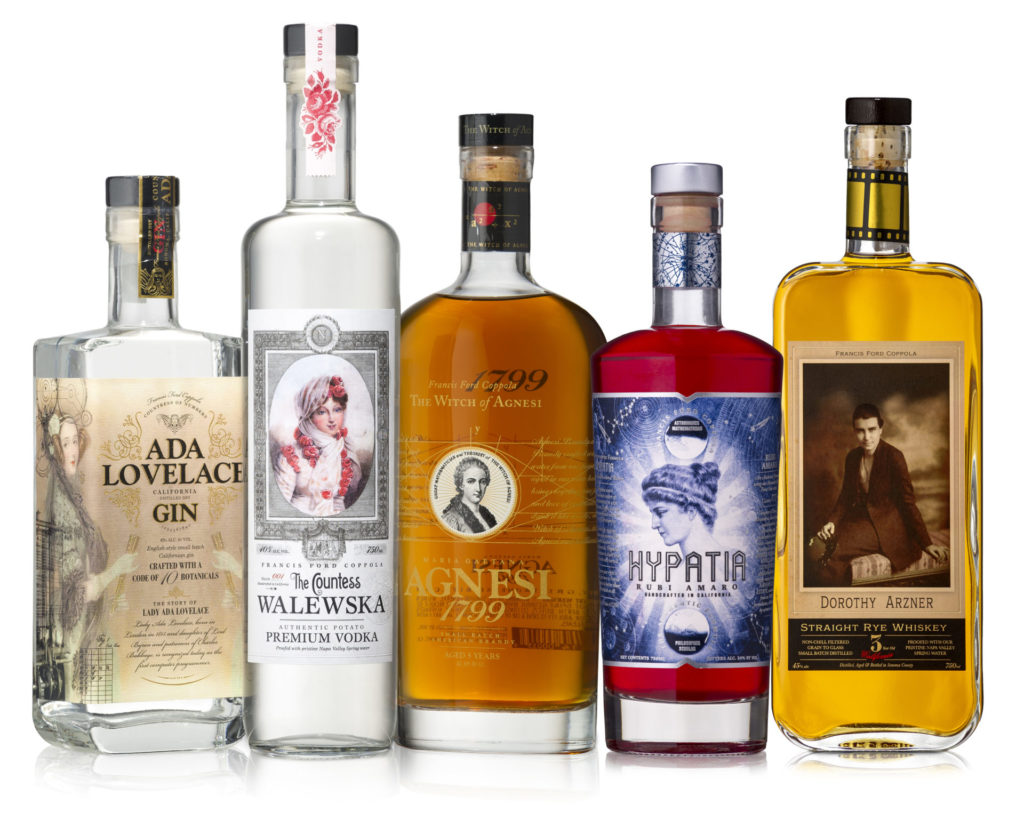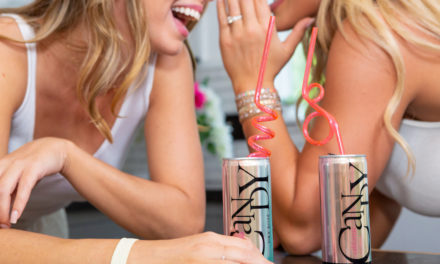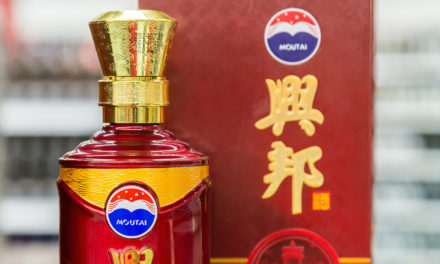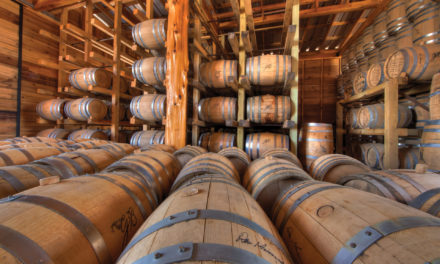Oscar-winning filmmaker Francis Ford Coppola entered the wine business partly by chance, but it isn’t chance that got him where he is today. It’s his determination to turn his ideas into reality, on his own terms. And a big part of that process is relating stories as only a master storyteller can.
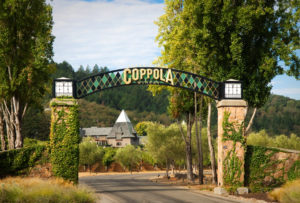
Setting the table
Let’s take a step back and consider how this particular story began. “As an Italian-American, I confess I never saw a dinner table that didn’t have wine on it,” says Coppola. “But I also remember the great stories my uncles told me about the days during Prohibition, when the government allowed families that were accustomed to drinking wine with food to make two barrels of wine in their homes.
“My grandfather had seven sons and expected them to help make this home wine, but the boys were more anxious to steal the grapes, because fresh fruit was a luxury and they were quite poor. Imagine a single orange divided up between seven boys. There were elaborate schemes, such as lowering the youngest, in a basket on a rope, into the cellar where the grapes were kept and, as the old man approached, letting go—with the littlest brother crashing into the grapes. We loved hearing those stories, sitting around the table, where we kids were allowed a little wine mixed with 7UP.
“Later in my life, when finally I’d earned a little money, I suggested to my wife, Eleanor, that we buy a summer cottage in Napa Valley, hopefully with a few grapevines. The agent showing us these modest possibilities said, ‘These aren’t for you, but the Niebaum estate is being auctioned and it was once part of the great Inglenook, the most beautiful wine estate in the world, and this is a chance to see it.’
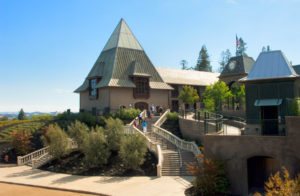 “So we went to see it—but to behold it was to wish it could be yours. Eventually, that wish came true [after the success of The Godfather]. With it came about 100 acres of premium Napa vineyards and, soon, many winemakers were offering to lease those vineyards. I said to Eleanor, ‘Why don’t we just keep those grapes and make wine ourselves?’
“So we went to see it—but to behold it was to wish it could be yours. Eventually, that wish came true [after the success of The Godfather]. With it came about 100 acres of premium Napa vineyards and, soon, many winemakers were offering to lease those vineyards. I said to Eleanor, ‘Why don’t we just keep those grapes and make wine ourselves?’
She answered, ‘What do you know about how to make wine?’
I replied, ‘Nothing. But neither do I know how to make movies, and that hasn’t stopped me.’
And that’s how I found myself in the wine business.”
Coppola established the property as Niebaum-Coppola in 1975; its flagship wine, Rubicon, was released in 1978. In 1995, he purchased the rest of the Inglenook property (something he’d always intended to do) and, in 2011, acquired Inglenook’s name and trademark—coming full circle to both honor the original property and move forward to ensure its survival and sustainability.
According to the company’s website, Rubicon, a Bordeaux-style red blend, “was named after the small river crossed by Julius Caesar in 49 B.C., declaring his intention to gain control of Rome, thereby launching a civil war among opposing factions. Over time, the phrase ‘crossing the Rubicon’ has come to signify any irreversible action with revolutionary intent or the outcome of which holds great risk. True to its uncommon depth, Inglenook’s Rubicon continues to be a testament to the finely tuned rendering of a risk well-taken.”
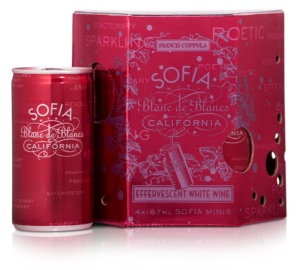
The many muses
With any and all of his creative and business endeavors, Coppola is heavily involved—with the greatest detail—in the design and presentation of each of his products. His ideas regarding experiences, product names, styles, and packaging begin, he says, with creative intent. “Usually I like to do creative work early in the morning. I have all my energy then, and it’s too early for anyone to have hurt my feelings,” he says.
He mentions reading as one of his greatest inspirations. “No matter what I’m working on, I find that the reading I do, usually late at night before sleep, tends to be relevant. My reading could be on a broad range of subjects, fiction or nonfiction, but whatever it is seems to pertain to whatever else is on my mind. It’s as though without realizing it, I’m constantly searching for ideas and suggestions, and I unconsciously filter them out. It’s very useful.”
He also finds inspiration among those he loves. “When our first wines came out under the name Coppola, my mother said, ‘Oh Coppola this and Coppola that, remember you’re also a Pennino.’ To make her happy, we came out with a wine honoring her side of the family, Edizione Pennino, a luscious zinfandel.” The wine is named after his maternal grandfather’s music publishing company, and each bottle has one of his song titles imprinted on its cork. Francesco Pennino, who immigrated to New York from Naples in 1905, is whom Francis is named after.
“That set the pace, and I began to honor various family members,” he continues. “I made a sparkling wine for my little nine-year-old daughter, Sofia, and told her one day it would be served at her wedding. I made another in admiration of Eleanor. I soon realized that, little by little, I was turning all my relatives into products—but they were delicious wines and expressed my love and admiration for my family. Other names, like Archimedes and Domaine de Broglie, are those of great scientists.”
Coppola says Eleanor plays a prominent role when it comes to his ideas. “She has a strong and very attractive aesthetic, formed through a lifetime interest in graphic arts,” he says. “She often presents a point of view that simplifies my first ideas.”
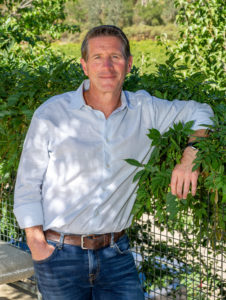
“Francis has embedded in us that whenever we can, we want to produce things ourselves. So all the products are made here, and all are under our control.” —Corey Beck
Diving in
In 2006, Coppola purchased Chateau Souverain in Geyserville (Sonoma County, Calif.), about an hour northwest of Inglenook. Corey Beck, CEO and winemaking chief for Francis Ford Coppola Winery, was instrumental in the process. “We wanted to create a winery for the Diamond series and start a Sonoma County brand separate from Inglenook,” he says. “It was a bonus that it had a restaurant, and we immediately began working to transform the property into what it is today.
“Francis came to a meeting in 2007 with a sheet of paper, on which one of his set designers had sketched a rendition of what he imagined the property to be—including a pool near the tasting room. ‘Think of any resort,’ he said.
“The journey took us through the economic crash of 2008 to 2009, and we wondered if we should put the renovations on pause,” continues Beck. “But Francis said no. He wanted to create an experience that families could enjoy. He was the one who could see it to fruition.
“Today, we can see the children playing. There’s a beautiful teepee that houses a children’s library, and a smoothie bar for the kids.”
Movie memorabilia, including the classic 1948 Tucker automobile from Coppola’s film Tucker: The Man and His Dream, based on the life of Preston Tucker, is another draw for all ages, as is the winery restaurant, Rustic, which features recipes from Coppola’s family and friends, as well as some inspired by his travels. “The restaurant is an opportunity to showcase those recipes,” says Beck. “For example, Mrs. Scorsese’s lemon chicken is crafted after a dish Martin Scorsese’s mother made. [In the development stage], Francis made every dish on the menu, along with the chef, to show how it should taste.”
 Making it work
Making it work
The Director’s Cut series was created so Beck could craft vintages that reflected his vision of Sonoma County wine. Each one is limited-production and appellation-designated. The name of the series reflects the director’s vision of a film. Thus, the labels are a testament to that process—each one features a replica from a strip from Coppola’s zoetrope collection (a zoetrope is one of the first moving picture devices). But the wrap-around label wasn’t easy to produce. “The label wraps around the bottle twice,” says Beck. “It’s something no one had done before. After an extensive search, we found an Australian company that made a machine that could do the double label, and we purchased one.”
Another challenging task was creating a way to realize Coppola’s vision for the company’s claret wine, a Bordeaux-style blend fashioned after one of the first wines made at Inglenook in the 1800s. “Francis wanted to put a net around it,” says Beck. “He told me to go to Spain to see the netted bottles. I was dumbfounded, because I visited bodegas where there would be seven people putting the nets on by hand.
“The brand was big [claret was the first in the Diamond series], and there was no way we could do it by hand. We eventually found a company in Bordeaux that made one netting machine per year. We purchased one and, when the brand doubled in production, we purchased another.”
In 2013, Coppola purchased Geyser Peak Winery, now called Virginia Dare Winery. “It has a big warehouse, and Francis wanted to use it to house our own sparkling bottling line,” says Beck. “Right now, we’re installing that as well as our own canning line. Sofia sparkling, which Francis created in 2004, was one of the first canned wines available in the United States.
“Francis has embedded in us that whenever we can, we want to produce things ourselves. So all the products are made here, and all are under our control.”
Honoring historical women
Virginia Dare Winery is named after a somewhat mythical figure, said to be the first woman of English descent born on American soil. She was honored by one of the first wineries to begin production after the repeal of Prohibition, and it was one of the most popular brands available during the 1940s and 1950s. Coppola remembers her beautiful face on the bottles, and the song about her that played on the radio. Today, his winery honors her memory. She’s only one of the historical figures Coppola commemorates with his products.
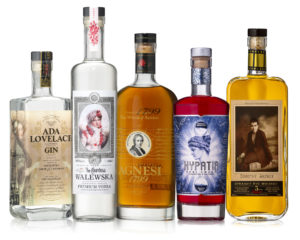 “Years ago, I found and enjoyed a book titled 12 Against the Gods by William Bolitho,” says Coppola. “It contained 12 short biographical sketches of men throughout history who heroically stood up against the forces against them. I thought at that time that it was possible to come up with great women who had done the same—women like Hypatia, Sor Juana, Countess Maria Waleska, and Ada Byron [a.k.a. Countess Lovelace], Edith Wharton, Eleanor of Aquitaine, and many others. Much later, when our company had the legal opportunity to make and distribute spirits, I decided to honor the many women of history who were deserving.”
“Years ago, I found and enjoyed a book titled 12 Against the Gods by William Bolitho,” says Coppola. “It contained 12 short biographical sketches of men throughout history who heroically stood up against the forces against them. I thought at that time that it was possible to come up with great women who had done the same—women like Hypatia, Sor Juana, Countess Maria Waleska, and Ada Byron [a.k.a. Countess Lovelace], Edith Wharton, Eleanor of Aquitaine, and many others. Much later, when our company had the legal opportunity to make and distribute spirits, I decided to honor the many women of history who were deserving.”
Thus was born Great Women Spirits.
“When Francis said he wanted to produce spirits, I shoved my foot in the door and went to Moonshine University,” says Natalie Dale, distiller for Great Women Spirits, who had been on the winemaking team previously, and now does both. “He wanted to create a brand about historic women who may not otherwise have had light shed on their stories,” she says. “All are classically inspired. He chose them through his own research, which stretches back as far as his childhood.”
Kathleen Murphy, VP of innovation and new business development, joined the company to help with the spirits line, each of which (there are now five—gin, vodka, amaro, brandy, and rye whiskey—but there will be 12 total) has its own bottle and label design. “The bottles and labels create the canvas to tell each story; what’s inside is a representation of that story,” she says.
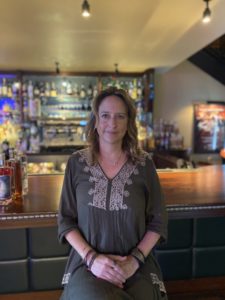
“What Francis has created is brilliant. All the bottles have different shapes and styles. Each is individually unique for the woman being honored.” —Kathleen Murphy
“We start with the creative first, and work from there,” says Murphy. “To create a package, Francis first goes to our in-house design group, with images and ideas for them to work with. One of my favorites is the Ada Lovelace gin. The package really tells her story, with all authentic images.” Ada Lovelace (1815-1852), daughter of Lord Byron, is recognized as the world’s first computer programmer. “It was she who cracked the code,” says Murphy. “The label has images of the analytical engine, a machine she developed with Charles Babbage. There are images of early coding, a passage from the many letters she and Babbage wrote to each other, and more. Consumers can use it to learn about what she’s known for.”
The gin itself is crafted with 10 botanicals, some of which are sourced from Coppola’s Napa estate.
“We start with lemon peel and rose petals from the estate. It makes the lab smell amazing,” says Dale. “We also use ingredients like cardamom, angelica, and juniper from an apothecary in Sebastopol [in Sonoma County].
“Francis comes up with the ideas for each spirit,” continues Dale. “We take direction from the director. He’s very involved; he’ll taste and approve the final product. He doesn’t skimp on quality or how long it takes to get it right. It can take years.”
All of the spirits are crafted with spring water from the Inglenook estate. “Its pH is more alkaline than other spring water. It’s crazy how it can swing the flavor,” says Dale. “High alkaline water is good for you, and brings all the aromatics to the foreground.”
The most recent release is Dorothy Arzner straight rye whiskey, which was released in April 2020. “It’s named after the first woman to direct a film with sound,” says Dale, noting it has the names of some of her movies on the label, and that she was one of Coppola’s teachers.
“It’s a three-year rye with a mash of about 70 percent rye and 30 percent malted barley, which softens the finish. I love ryes. They’re showy and almost chewy. One batch makes two 53-gallon barrels, and it’s truly grain-to-glass. We work with Spirit Works Distillery in Sebastopol to do this. It’s been a great business incubator for us and other distilleries,” says Dale.
What’s coming next for spirits? “We’ll release our 100 percent agave tequila in early 2021,” says Murphy. We’ve partnered with a female distiller in Jalisco, Mexico. The tequila will be named after Sor Juana, a Mexican nun who lived in the 1600s and is known as a founding mother of Mexican literature. Many towns have churches named after her, and there was a 200-peso bill with her photo.
“What Francis has created is brilliant,” adds Murphy. “All the bottles have different shapes and styles. Each is individually unique for the woman being honored. But you can tell they all come from the same place, because they all feature a prominent woman’s image. It’s easy to recognize them as a family,” she says.
 The Grower’s Series
The Grower’s Series
Why stop with wine and spirits? “Francis wanted to get into cannabis beginning in 2017,” says Murphy. “The legwork needed to happen before it became legal [in 2018], so we worked our network of friends and started the journey to eventually find the type of licensing partner that was needed. Francis wanted cannabis grown outdoors and based in Humboldt County [part of the “Emerald Triangle” region in Northern California, the largest cannabis-producing region in the United States]. Of all the characters we met, the Humboldt Brothers were the most forward thinking. The Grower’s Series was born.
“Consistent with all his other products, the packaging idea came first,” continues Murphy. “He showed up with a paper mache bottle shaped like a small wine bottle. The top opened up, and inside was a sample set that was meant for people who wanted to discover—or rediscover—cannabis. Ultimately, it included three one-gram strains, a pipe, rolling papers, matches, and a brochure to guide users through the experience. The information was about the growers and the locations where the cannabis was grown. There were tasting notes and pairing ideas. His concept was to educate wine consumers about cannabis by using the language of wine.”
The results were successful. “Coppola was the first family-run wine company to come out with a separate company that sold cannabis,” says Murphy. “He wanted to test the waters and make sure consumers weren’t turned off by the idea. It proved to be a space he could get into without alienating his consumer base.
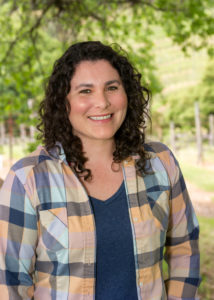
“We take direction from the director. He doesn’t skimp on quality or how long it takes to get it right.” —Natalie Dale
“The biggest challenge was distribution. Since it was so early out of the legalization gates, the regulations were constantly changing. There was a lot of course correcting for everyone involved. That’s why we temporarily withdrew from the market until the regulations were figured out more clearly. We’ll reenter the business in 2021, again with appellation-driven, educational, grower-supportive products.”
Design with intention
“We’re an innovative, unpredictable family company that’s always been dedicated to making things that are authentic, of quality, and that bring pleasure,” says Coppola. “If we produce something, we actually do it—not job it out—and it must meet our standards because we actually consume or use it.
“When I was young, I spent many hours watching Fred Astaire rehearsing [at age 29, Coppola directed Astaire in 1968’s Finian’s Rainbow]. In the course of that, he told me that the main regret he had in his life was when he licensed his name for the ‘Fred Astaire Dance Studio.’ For all the years that followed, it stuck in his craw that the studio taught a style of dance that he hated.
“I’ve always thought of that throughout my life. That’s why, if I have a restaurant, I personally have designed the menu and can cook the food. If I make wine, I personally drink it. If we operate a resort or hotel, we personally configure and design it, and I sleep in every room and take a shower in every shower. In the future, if we ever make a watch or produce clothes, you can be assured that we designed or made it ourselves. Yes, ideas are ideas, no matter what sort of a project they may pertain to.”
If that isn’t quality assurance, I don’t know what is.

